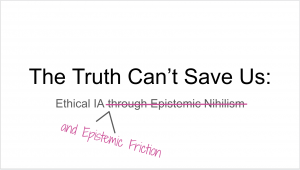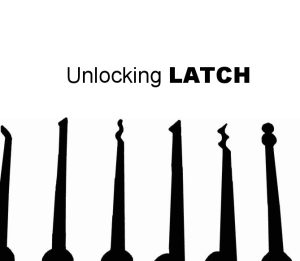It has been rightly said that theory, if not received at the door of an empirical discipline, comes in through the chimney like a ghost and upsets the furniture, but it is no less true that history, if not received at the door of a theoretical discipline creeps into the cellar like a horde of mice and undermines the groundwork. -Erwin Panofsky
Information Theories for Information Professionals – IAC 2022
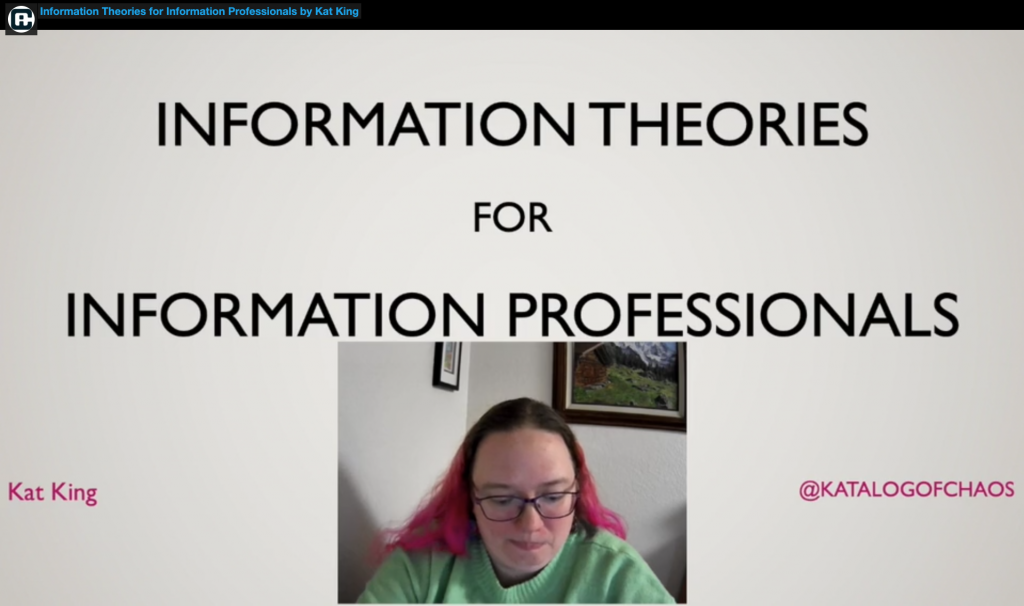 In this talk I explain what information is from the perspective of 3 experts working in 3 different academic disciplines, situate the theories as complementary instead of opposed, and then explain how information professionals can use these perspectives to do their work better.
In this talk I explain what information is from the perspective of 3 experts working in 3 different academic disciplines, situate the theories as complementary instead of opposed, and then explain how information professionals can use these perspectives to do their work better.
Link to talk (registration required)
Personal Ontology Mapping – IAS 2018
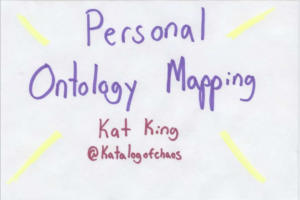 This talk built a case for information architects to map their own ontologies. Using my own journey overcoming my anxiety about making sure I was doing work that was Good, I offered a way to understand information architecture as the careful crafting of things to communicate meaning within the ontologies of others, and suggested that to do information architecture work that is both technically and morally good, we must first be able to honestly communicate what we as individuals believe.
This talk built a case for information architects to map their own ontologies. Using my own journey overcoming my anxiety about making sure I was doing work that was Good, I offered a way to understand information architecture as the careful crafting of things to communicate meaning within the ontologies of others, and suggested that to do information architecture work that is both technically and morally good, we must first be able to honestly communicate what we as individuals believe.
FFS, Don’t say Empathy- MWUX17
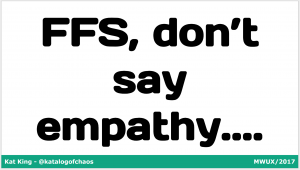 A talk given at Midwest UX 2017 about what empathy actually is, and why it's not a replacement for ethics.
A talk given at Midwest UX 2017 about what empathy actually is, and why it's not a replacement for ethics.
Deciding Truth- MWUX16
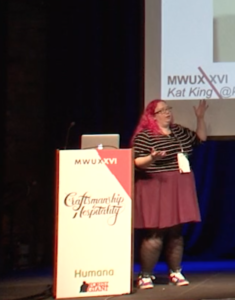 A talk given at Midwest UX 2016 about how the categories we use uphold or challenge existing understandings of reality. I explained how shifting realities can make users uncomfortable, but that if we want to do work that is good for humanity, sometimes that's ok.
A talk given at Midwest UX 2016 about how the categories we use uphold or challenge existing understandings of reality. I explained how shifting realities can make users uncomfortable, but that if we want to do work that is good for humanity, sometimes that's ok.
The IA of I am – World IA Day Ann Arbor 2016
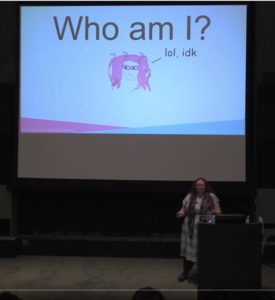 The opening talk for WIAD 2016 in Ann Arbor, I compared information architecture to the process of creating and communicating 'self' using examples from my own life, and the public life of Paris Hilton.
The opening talk for WIAD 2016 in Ann Arbor, I compared information architecture to the process of creating and communicating 'self' using examples from my own life, and the public life of Paris Hilton.
Architecting Reality – IAS 2015
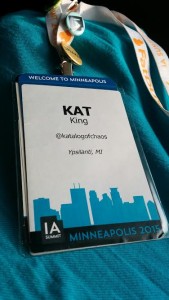 A 20 min talk that argued that as information architects, we work within the web of semantic reality, and that our work not only describes what is so that others can understand, but also creates what is. The choices we make can either uphold existing structures, or actively resists them, and we have an ethical obligation to examine what that means and resist the temptation to use paths that are well understood, but rely on structures that make the world a worse place.
A 20 min talk that argued that as information architects, we work within the web of semantic reality, and that our work not only describes what is so that others can understand, but also creates what is. The choices we make can either uphold existing structures, or actively resists them, and we have an ethical obligation to examine what that means and resist the temptation to use paths that are well understood, but rely on structures that make the world a worse place.
Cultivating Abundance – IAS 2015 Poster session
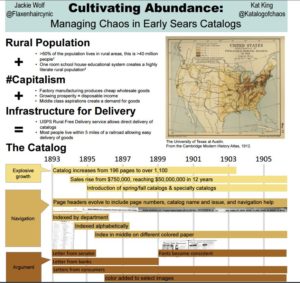 A poster explaining research done with Jackie Wolf on the early information architecture of Sears catalogs. We conducted original research on microfilms of early Sears catalogs to understand how the catalog developed. We traced the development of information navigation features, like page numbers and indexes, and features meant to help customers understand what the catalog was, like letters of recommendation and example orders. We also made an argument about the technical and cultural factors which allowed for the catalog's success.
A poster explaining research done with Jackie Wolf on the early information architecture of Sears catalogs. We conducted original research on microfilms of early Sears catalogs to understand how the catalog developed. We traced the development of information navigation features, like page numbers and indexes, and features meant to help customers understand what the catalog was, like letters of recommendation and example orders. We also made an argument about the technical and cultural factors which allowed for the catalog's success.
Architecting Happiness – World IA Day Ann Arbor 2015
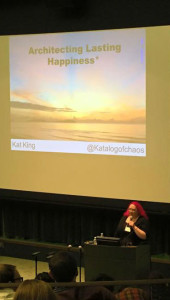 In this 45 minute expanded on my previous analysis of Richard Saul Wurman's LATCH and made the claim that humans don't operate in an objective reality, but instead think and communicate in a shared reality of shortcuts. I argued that LATCH operates as a tutorial for us to push on things to see where they sit in this reality so that we can understand them, but that it is not comprehensive enough. It misses shared structures which have the potential to create suffering, and if we want information architecture to create happiness, then we need to look critically at some of the structures that LATCH misses.
In this 45 minute expanded on my previous analysis of Richard Saul Wurman's LATCH and made the claim that humans don't operate in an objective reality, but instead think and communicate in a shared reality of shortcuts. I argued that LATCH operates as a tutorial for us to push on things to see where they sit in this reality so that we can understand them, but that it is not comprehensive enough. It misses shared structures which have the potential to create suffering, and if we want information architecture to create happiness, then we need to look critically at some of the structures that LATCH misses.
Video of my talk -at 2:21:00

